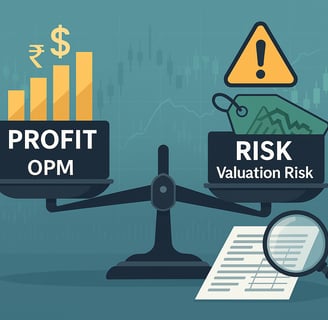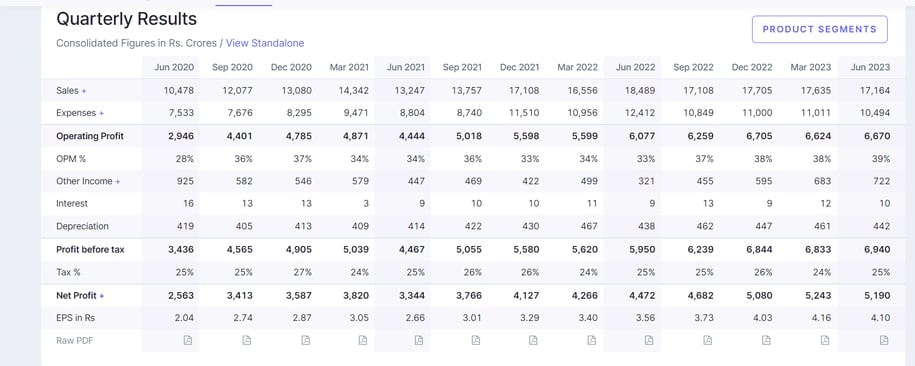Profitable Risk Management in Finance: Smart Investment Strategies
In the world of finance, understanding profitable risk is essential for making sound investment decisions. This guide explores value investing principles, risk management tactics, and how to identi...
EXPERT GUIDE
4/10/20252 min read


Profitable risk in finance is the potential to generate a positive return on an investment, despite the fact that there is some risk of loss involved. It is the risk that an investor takes in the hope of earning a higher reward.
Profit is the core element for the business to sustain and grow over time and if the business doesn’t make a decent amount of profit then it can gradually cause losses to the company and big institution investors might withdraw their capital which creates selling pressure and investors might lose their money.
So we should always look for businesses whose profit is continuously growing over time. Revenue, net profit, etc. have to be checked
OPMs (Operating profit margin) are a measure of how profitable a company is relative to its sales. They are calculated by dividing operating profit by sales.
An increasing OPM indicates that a company is becoming more efficient and profitable. This is because the company is generating more profit from each dollar of sales.
There are a number of reasons why OPMs should always be increasing for a company. These include:
Increasing sales: As a company's sales increase, its fixed costs are spread out over a larger number of units, which results in a lower cost per unit and a higher OPM.
Reducing costs: A company can also increase its OPM by reducing its costs. This can be done by improving efficiency, negotiating better prices with suppliers, or eliminating unnecessary expenses.
Increasing prices: A company can also increase its OPM by increasing its prices. However, it is important to do this carefully, as increasing prices too much could lead to a decrease in sales.


Valuation risk in finance is the risk that an asset or liability is not valued correctly, which can lead to losses for investors. It is an instantaneous risk that is measured at a specific point in time
When you buy a stock at a high valuation, you are paying a premium for the stock. This means that you are more likely to lose money if the stock price falls. Additionally, high-valuation stocks are more likely to be overvalued, which means that they are more likely to experience a sharp correction in the event of a market downturn.
Value investing is a strategy of investing in stocks that are trading below their intrinsic value. Intrinsic value is the estimated worth of a company based on its fundamental financial performance. Value investors believe that the market will eventually correct itself and that undervalued stocks will eventually rise to their intrinsic value.
By investing in undervalued stocks, value investors are reducing their exposure to valuation risk. If the market does experience a downturn, undervalued stocks are likely to outperform overvalued stocks.
But when investing in any undervalued stock then do proper research and only invest in fundamentally strong companies. Valuation should not only be considered while making a decision all other aspects also have to be considered because it's not always that high a valuation stocks will always face a downtrend but if it comes to the fundamentals of the business when making a decision consider all the aspects
Ready to start your investing journey?
Open your free Demat account with Angel One and take your first step towards smart investing. It’s simple, fast, and beginner-friendly!
Thank you
Prabhav Maheshwari
EASE investors
© 2024. All rights reserved.
EASE INVESTOR
